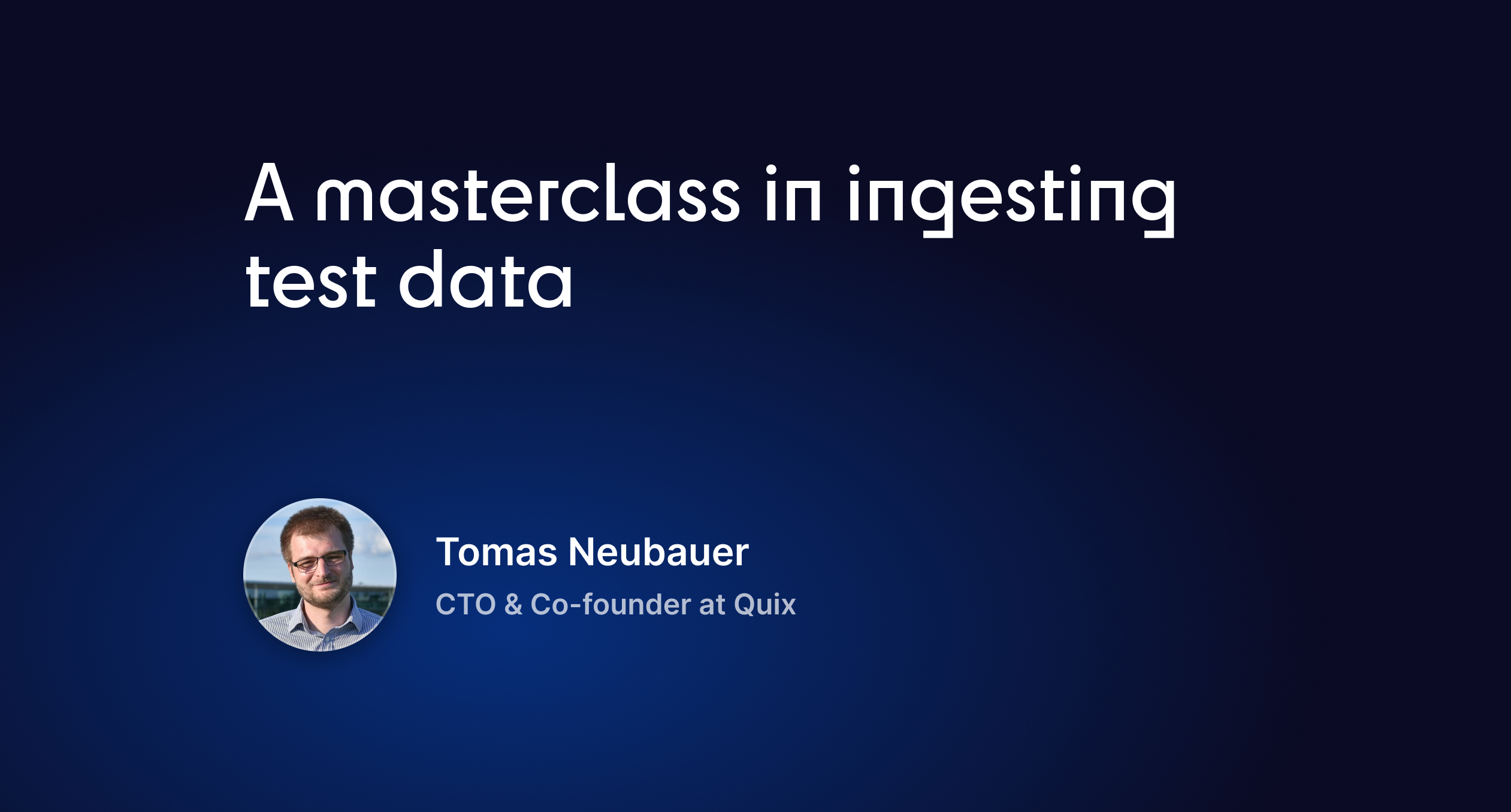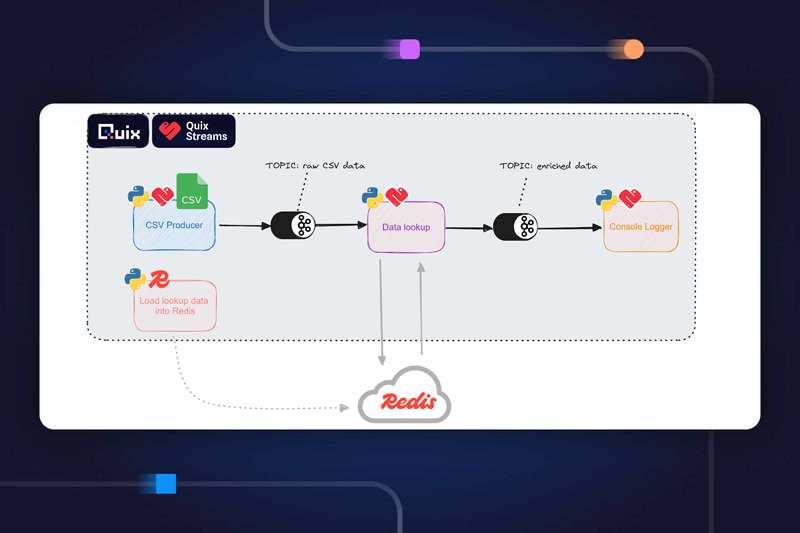Build and deploy a data science project (no developer required)
An in-depth tutorial on how one data scientist created a real-time predictor of bike availability — a use case you can apply to any fleet or mobility solution.

Alert: This post includes images of the Quix portal that are no longer accurate. We have updated images here.
Creating a real time predictor of bike availability in New York
Stop wandering around in the rain in search of a bike share
There’s nothing worse than wandering around a city in search of a bike share. Correction: there’s nothing worse than wandering around a city in the rain while searching for a bike share. The additional time and misery really defeat the whole point of taking a bike. If you’re in a place like New York City, where 8.8 million people averaged 72,000 bike rides in 2020, this could be a common occurrence.
Thankfully, a large amount of data about bike availability is available and frequently used in the data-science community. Kaggle datasets predict bike availability, NYC’s bike-share map offers some real time bike availability information and Cliff Kranish provides a historical analysis of journey patterns. But what about predictions?
I want to generate real time predictions about bike availability in the next hour and in the next day that take weather into account. This requires a machine learning model and infrastructure to make the model’s insight constantly available to end users. A one-off API call to get historical data to train my machine learning model will not be enough. This task of taking ML to production is one of the primary challenges in any data-science project — 87% of machine learning projects never make it to production. And it’s even more challenging with real time data.
Deploying models in real time is hard
It’s generally agreed that the large and varied group of people needed to deploy ML models makes them difficult to deploy. They need people working on IT architecture, statistics, ML model training, and deployment, which form IT, data science and data engineering teams. That range means there’s some inherent disconnection between everyone.
Moreover, streaming data keeps getting harder to handle. These challenges make it usually difficult for us data scientists to extract the value of real time data.
This is my skill graph as a data scientist. The purple shows my abilities and indicates what type of people I need to work with to develop ML models.

The empty-skill area demonstrates why I can’t deploy ML models by myself. I mean, I could take a few months to learn Kafka, real time cloud deployment skills, and generally improve my software engineering skills, but who has time for that?
How to fix my streaming data engineering gap easily with Quix
I could call a data engineer friend and get some help. Someone whose skill graph fills in my gaps.

Working with a data engineer is fine, of course. But it will take a while and I’ll lose some control of the process. This impacts aspects of the ML model, including data-transformation strategy architecture.
But what I would love is a tool that generates an efficient real time Kafka infrastructure with deployment and version control. That’s precisely what Quix does.
Quix lets me complete all aspects of the ML model projects using Python. Quix’s real time SDK is faster and more efficient than Kafka and Flink, and the platform is simpler to use than anything else — the factor that I and other data scientists care about most. I can now accomplish on my own in just a few hours what would have taken me and a data engineer friend months. I can deploy my machine learning model in real time using Quix and my Python skills alone.
This means that I now have the option to change my machine learning modelling strategy. I won’t need enormous amounts of data to train a model that learns what happens every month, week, day and hour.
I can use a feed for the real time number of bikes that already accounts for most of the variations caused by sporting events, holidays and construction to help my predictions for the next hour and the next day.
How to predict the real time availability of bikes in New York City using Quix
Quix allows me to build Kafka topics by clicking a single button. I can then add several streams to that topic to parallelize the data flow if needed for low latency reasons. Here are the key steps for our bike use case.
1. Pipeline Creation
The first step was to create streams of real time data. I created one topic for the bikes and another for the weather data (again, just with a click). You can read more about topics here.
For each topic, I then created a single data stream. It’s possible, but unnecessary, to parallelize the data traffic to decrease the latency in this use case. Periodically performing API requests to third-party services feeds this stream with real time data. I used CityBikes for the bike data and OpenWeather — which required a free account — for the weather data. I created a topic with just a click, but the streams within them are coded in detail.

Check out the bikes API requests and weather API requests code that I used. You can copy the main functions into your local IDE and try them out.
2. Data storage
I stored the streamed data using the persistence feature that is already built into the Quix workspace. I set the persistence to On and Quix took care of writing the streamed data into the Quix catalog to maintain the live-stream context.
It’s great to know that Quix writes each data type to the optimal database technology in terms of performance and cost efficiency.
3. ML model training
I decided to train the models locally and then deploy them in the Quix project. I first queried my historic accumulated data from Quix by specifying which data to query, and then Quix automatically generated the code that I need to paste into my IDE.

I based my modelling approach on the use of real time data. The current number of bikes is already a strong predictor for the number of bikes in an hour from now. I trained the models to predict the residual (difference) between the current number of bikes and the number of bikes in one hour.
Checking the distribution of this residual vs. the hour of the day, it seemed clear there were some patterns our model could find.

I used the same approach for the one-day-ahead model. While modelling isn’t at the core of today’s problem, you can still check out how I trained the two models.
4. ML model real time deployment
After I trained the two ML models (the one-hour-ahead and the one-day-ahead models), I put them into production. What’s the point of training a model that never ends up predicting in real time?
With Quix, I created an additional Kafka topic that hosts the model deployment. This topic listens to both weather and bikes topics. It also stores the ML models that we trained locally, which produce bike predictions in real time based on the incoming data from the weather and bikes topics. Finally, this topic contains three streams, one per output: the one-day ahead prediction, the one-hour ahead prediction and the actual current number of bikes.

Accuracy and reactability to model shift of our predictions
Let’s have a look at the quality of the predictions. I won’t go into detail with specific KPIs here, but an overall look shows how well both models perform.

It’s very complicated to achieve this level of accuracy with traditional batch data processing approaches, and it takes far longer. Once we’ve gathered enough historical data, we can compare both.
It’s especially interesting to see how quickly our one-hour-ahead model reacts to an extreme change in conditions such as Tropical Storm Henri, which was not seen in our historic data.

One of the main problems with the batch approach models is shift: their deterioration in performance with real and changing environmental conditions.
We’re not just talking about bike predictions
We have now a Kafka topic streaming extremely accurate, real time predictions about bike availability in New York City. Different mobility apps, government institutions, and researchers can now connect to it to accurately forecast demand.
But the bikes are only one example. As great as it is to solve this prediction problem, I’m excited about more complex challenges that Quix can help me solve. I’ve been able to work in real time to change my modelling approach, which opens the door to fantastic things such as online learning. And Quix let me do this all on my own. I didn’t train ML models and then pass the project to someone else. I developed a whole real time data science project, from inception to production.
Improving the project the next time around
Could I have done better? Oh, yes! For example, I could have created a dashboard to output and track all these predictions. I may tackle this soon. In the prediction of available bikes, I could focus on the dock stations rather than the whole city. I could create one stream per dock in the bikes topic instead of a single overall stream.
Eventually, I could use ML to generate a real time heat map for bike availability that predicts the next hour or day. Or, perhaps, why not optimize my future journeys based on the nearest available dock station predictions and the Directions API from Google Maps?
To improve my prediction accuracy, I could add real time data on events occurring in NYC or holiday information using the Holiday API.
So much to do. 😊 Real time modeling is full of valuable and fun opportunities.
Data scientists out there, try Quix!
Data science offers the most value when our models get into production. Unfortunately, most projects never do. This bike prediction project demonstrates how easy it is to develop an end-to-end machine learning solution, while maintaining freedom and control over the entire data science process.

Maybe you’re working on livestock or crypto predictions, or personal health care monitors — so many fields exist where data scientists can benefit from Quix. It’s the tool you need to build real time infrastructure. Stop training ML models and start creating ML products.
We’re here and ready to help. Feel free to jump into the Quix platform for free, or talk with us on Slack if you’ve got a problem to try out on Quix. Let’s go!

Check out the repo
Our Python client library is open source, and brings DataFrames and the Python ecosystem to stream processing.

Interested in Quix Cloud?
Take a look around and explore the features of our platform.

Interested in Quix Cloud?
Take a look around and explore the features of our platform.

.svg)






